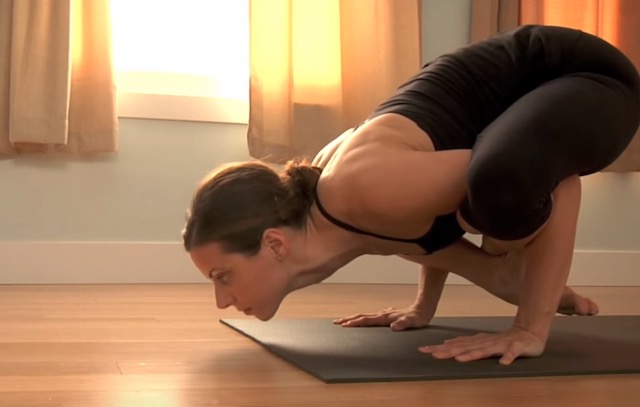I’ve always had an addictive personality.
It manifested in my relationships with people: I’d get attached to friends, family, and boys, and be heartbroken when they’d inevitably demand space.
Through high school and college I was addicted to anything that offered an alleviation from anxiety, depression, and inner turmoil, be it food, drugs, exercise, amphetamines, or alcohol.
Then I discovered yoga. Yoga offered a sense of relief, a feeling of clarity and deep inner peace. Since discovering yoga, most of my unhealthy habits and addictions slowly started to melt away as I consistently showed up to the mat.
But my addictive personality also manifested itself here, too.
I strived to practice as much yoga as possible, learning about the practice through books, ashram visits, trainings, movies, events at yoga studios, and more.
Around the time I discovered yoga, I also picked up book called The Joy of Living by a Buddhist monk. In layman’s terms, he outlined the benefits of practicing meditation.
To my surprise, everything this old, bald, Buddhist guy was saying about the origins of suffering in the mind deeply resonated with me. It convinced me to start a daily sitting practice of meditation on the breath. The practice ranged from 10-20 minutes each morning for the next five years.
Many people say the purpose of the postures in yoga is to prepare the body to sit in meditation for an extended period of time. After years of practicing mindful movements in the body, I had an inner yearning to finally just sit still for an extended period, so I enrolled in a Vipassana meditation retreat to explore and enhance my sitting meditation practice.
Traditional Vipassana retreats are 10 days of silence and 10 hours of seated meditation each day, with no communication with the outside world. There is a strict schedule from 4 a.m. to 10 p.m., and you are required to give up all other spiritual and meditative practices—prayer, journaling, yoga, running—along with books, phones, and sacred objects.
Teachers of Vipassana send you away recommending daily sitting of one hour in the morning and one hour in the evening at minimum to maintain the practice. The teacher also recommended honing in on this meditation technique to go as deep as you can go. He likened it to drilling for well water: One will never reach water by drilling so many holes in different spots; it’s important to choose one well and dig deep until you reach the water.
The retreat left me feeling much more grounded in the body and confident in my inner strength, ability to face inner demons and pain, and capacity to finish what I’d started—despite considering leaving at points and having to give myself a pep talk each afternoon.
However, while I could feel the benefits of meditation were powerful and definitely worth continuing, I still felt like something was missing. Upon returning home and to the yoga studio, I rediscovered the sense of immense joy that bloomed after each practice. Not only did the physical movement feel good, but the chanting and community connection filled my heart up in a way that solo silent meditation could not.
The side of me that likes to take things to extremes—informed by my addictive personality—wanted to find the one way that would make me feel good and alleviated of all suffering.
But maybe it doesn’t always work like that. Maybe there is a need to explore different methods and integrate different practices in a way that works to maintain balance and harmony in the day-to-day. What this looks like might change over time, as all things in life do, so it’s important to be open to what the mind, body, and heart needs year to year, month to month, day to day, and moment to moment.
Maybe balance consists of variety. There is no need to be stuck in only one way. Yes, we must narrow in and drill deep into the well to reach water, but having multiple sources of water is ideal. Every off-the-grid dweller knows the importance of having multiple ways to access water if need be—groundswells, springs, rainfall, storage tubs.
Maybe it is good to value and maintain different practices for mind/body/heart alignment. Balance might be a mixture of yoga, meditation, running, writing, work, music, art, community involvement, and beyond.
There are 24 hours in a day. While it might be helpful to retreat every now and then and focus intensely on one practice, it is unlikely that one practice for all the waking hours of the day will lead to balance or fulfillment.
What a relief to feel there is room for all things that spark joy!
“Extremes are easy. Strive or balance.” ~ Colin Wright
~
~
Author: Kristen Buchan
Image: YouTube
Editor: Callie Rushton












Read 1 comment and reply